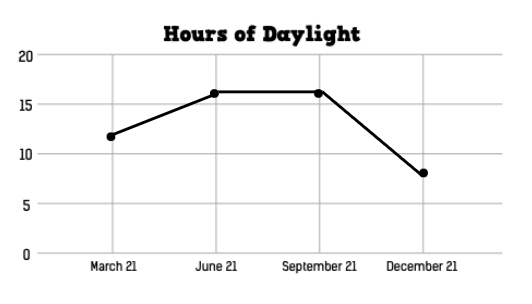n 1985, the Minnesota Agriculture in the Classroom program (MAITC), is a unique public/private partnership between the Minnesota Department of Agriculture and the MAITC Foundation. The program goal is to advance agricultural literacy to all learners, especially K-12 students, and educators.
MAITC’s mission is “to promote understanding and awareness of the importance of agriculture.”
We are pleased to offer the free AgMag series for kindergarten through 6th grade. Each issue is written and targeted to each specific grade level. The magazine is sent early in the school year for beginning readers. Teachers can use it when the reading level of their students matches the reading level of the magazine. We publish two issues each school year, in October and March. Enjoy!
Why Ag in the Classroom?
Previously, people were very aware of the role agriculture played in their lives—it meant survival. Nearly everyone—men, women, and children—worked the land.
Agriculture still means survival. That will never change. But as time goes on, fewer people have close contact with farming. They’re not aware of their own—and the nation’s—total dependence on agriculture. Think about it:
- Fewer than 2 out of 100 Americans work directly in production agriculture (farming). This small group meets the food and fiber needs of the nation as well as many people abroad.
- Agriculture, along with its related occupations, is one of the nation’s largest industries It generates billions of dollars each year; one out of every five jobs depends on it in some way.
Agriculture is constantly changing. But one thing remains the same: Agriculture is a vital part of your day! Even as early as the primary grades, it’s important for students to gain an understanding and appreciation for the ways agriculture touches their lives, each and every day. Food doesn’t magically appear in the grocery store or on the kitchen table. It all starts with agriculture.
Minnesota Academic Standards Connection
| Subject | Standard Code | Benchmark |
| Social Studies | 3.3.1.1.1 | Use maps and concepts of location (relative location words and cardinal and intermediate directions) to describe places in one’s community, the state of Minnesota, the United States or the world. |
| Social Studies | 3.2.3.5.1 | Explain that consumers have two roles — as sellers of resources and buyers of goods and services; explain that producers have two roles — as sellers of goods and services and buyers of resources. |
| Science | 3.1.3.2.2 | Recognize that the practice of science and/or engineering involves many different kinds of work and engages men and women of all ages and backgrounds. |
| Science | 3E.2.2.1.1 | Organize and electronically present collected data to identify and describe patterns in the amount of daylight in different times of the year. |
| Science | 3L.1.2.1.2 | Plan and conduct an investigation to determine how amounts of sunlight and water impact the growth of a plant. |
| Health | 1.5.1 | Describe the relationship between healthy behaviors and personal health. |
| Health | 7.5.2 | Demonstrate a variety of healthy practices and behaviors to maintain or improve personal health. |
AgMag Theme: Agriculture: Helping You Everyday!
- What is Agriculture?
- Where are Specialty Crops Grown?
- Growing Regions of Minnesota
- Who are the Growers?
- Where Can You Find Specialty Crops?
- How Can Tulips Grow in Minnesotan Winters?
- Why Do We Need Fruits and Vegetables?
Glossary
Some words in your AgMag may be unfamiliar to your students. Many are defined in the articles. There is also a glossary on the AgMag website. Words you might wish to pre-teach are:
AGRICULTURE: Growing plants and raising animals that people use for food, clothing and many other things every day. It’s also harvesting those farm products and getting them to us so we can use them. Agriculture is the industry that grows, harvests, processes, and brings us food, fiber, fish, forests, sod, landscaping materials, and more. It uses soil, water, sun, and air to produce its products. The process starts on farms, orchards, gardens, and ranches with the growing and the harvesting of crops and livestock, then moves to processing plants before finally traveling as finished products to stores, farm markets, lumberyards, greenhouses, and more where consumers buy the products. Agriculture is connected in some way with almost everything we eat, wear, and use.
Quote from an Unknown Source: “Agriculture is not simply farming. It’s the supermarket, the equipment factory, the trucking system, the overseas shipping industry, the scientist’s laboratory, the houses we live in, and much more. It has an effect on the air we breathe, the ground we walk on, the water we drink, and the food we eat.
GROWING SEASON: The season of the year in which rainfall and temperature allow the crop to grow.
PEAK SEASON: This season occurs when the crop is ready to harvest and we can use it or eat it when it is fresh and most delicious.
CSA SHARES: Community Supported Agriculture (CSA) is a production and marketing model whereby consumers buy shares of a farm’s harvest in advance.
AgMag Cover: Agriculture: Helping You Every Day!
Discussion Prompts:
- What is agriculture?
- What are you wearing right now that came from agriculture?
- What did you eat today that came from agriculture?
Connecting Things to Agriculture
- Your students may need a little guidance in connecting the everyday items they use to a raw agriculture product. Draw a diagram on the board that connects an item to agriculture.
- Ex: Cereal → main ingredient is grain → grown in a wheat field
- Ex: Pencil → cut and assembled in a factory → made from wood → wood cut from forest
Define:
- Because agriculture related words may be new to some of your students, make sure to go over their definitions:
- Agriculture: Agriculture is making things that grow on farms, like plants and animals, into things that we use.
- Crop: Plants that are grown and harvested to feed people and animals or to make other things people need.
Page 2-3: Where Are Specialty Crops Grown?
Discussion Prompts:
- Begin this section by asking students if they know where bananas grow? How about cherries? Why do they think bananas don’t grow naturally in Minnesota? What fruits and vegetables can be grown in Minnesota?
Growing Regions of Minnesota:
- Help students identify the growing region in which they live.
- If you’re having trouble thinking of a specialty crop farm in your community, visit https://minnesotagrown.com/member/ a
- If you’d like to go more in depth with the Minnesota Growing Regions or Growing Regions in the U.S., consider splitting your class into groups, and assign each group to be in charge of a growing region. Have each group become the “experts” on their assigned region, and then present their findings to the class. They could present their findings on a poster, in a PowerPoint, or in some other creative way.
Page 4-5: Who Are The Growers?
Discussion Prompt:
- Do you know a farmer? Who are they and what do they grow? There are many farmers in Minnesota, let’s learn about some of them on this page!
There are 4 farms highlighted on these pages. One way to help students learn about each farm is to have them answer these questions about each farmer:
- Who is the farmer?
- Where do they live?
- What do they grow?
Farming Math:
Answer: 30 pounds of peas
If You Were The Farmer:
These fun, food-focused videos are a great resource for students as they learn about different crops that grow in Minnesota, and which crops they would grow if they were the farmer!
This link will take you to the playlist of videos from the QR code:
Page 6: Where Can You Find Specialty Crops?
Discussion Prompt:
- Have you ever seen a sticker on a fruit and vegetable from the grocery store? Sometimes they have the country or state where the produce was grown. What are the names of the places have you seen on those stickers?
- Have you ever been to a farmers’ market? What was it like?
Producers & Consumers:
Producers and Consumers can be a hard concept for students to grasp. This video does a great job explaining the definition of Producers and Consumers:
Farmers Market Activity:
Answers:
How much money will you have left over? $3
How much will you save with 20% off coupon when buying 5 apples? $1
Besides price, what else should you consider when choosing which fruits and vegetables to buy? Possible answers could include appearance, taste, who grew it, how and when you will be eating it, etc
Page 7: How can tulips grow in Minnesota in the winter?
Discussion Prompt:
What do you know about tulips?
Have you ever seen tulips growing in your neighborhood or local park?
What do you think needs to happen for flowers to be sold in your local grocery store? (have students turn to their neighbor and discuss the different things that would need to happen for flowers to be sold in the store, then have them share their ideas with the class).
Len Busch Virtual Field Trip of how the Tulips are Grown:
If you’d like to take a virtual field trip to learn how the tulips are grown, visit the following link.
Let’s Graph It:
Students’ graphs should look like this:

Page 8: Why Do We Need Fruits And Vegetables?
Discussion Prompt:
Why is it important for us to eat fruits and vegetables?
Fruits and vegetables provide us with important vitamins and minerals, they help our bodies to function by providing important nutrients, they help us fight off different kinds of diseases.
Extension activity:
Assign each student, or group of students, a different fruit or vegetable (one not shown in the AgMag) and have them research what nutrients their assigned fruit/vegetable provides them. Challenge students to develop a creative way to share this information with the class. Examples: poster, presentation, poem, song, etc.
Lessons
Farmers’ Market Finds- Students explore the value of farmers markets to local communities and discover the benefits of locally-grown food.
FoodMASTER:Fruits– Students identify fruits that grow on a tree, bush, or vine, classify fruits as pome, drupe, berry, melon, or citrus, perform an experiment about the browning of fruit, and dry plums to make prunes.
Right this Very Minute– Students read Right This Very Minute—a table-to-farm book about food production and farming—and diagram the path of production for a processed product, study a map to discover where different commodities are grown, and write a thank-you letter to farmers in their local community.
Activity Ideas
- Use the online Minnesota Grown Directory to investigate Minnesota grown specialty crops and the farms that produce them. See if there are any farms located close to your school. If possible, invite a specialty crop grower to your school or organize a field trip to his/her farm.
- Investigate your school lunch menu for a specific day or week. Challenge students to identify the specialty crops included. Discuss which plants would be grown in Minnesota and which items might be grown in another part of the United States or world.
- Have a Specialty Crop Chef competition! Encourage students to share a recipe that involves specialty crops or create their own. Use the smoothie recipe on page 8 for inspiration. Invite students to prepare their recipe for students and/or school staff.
